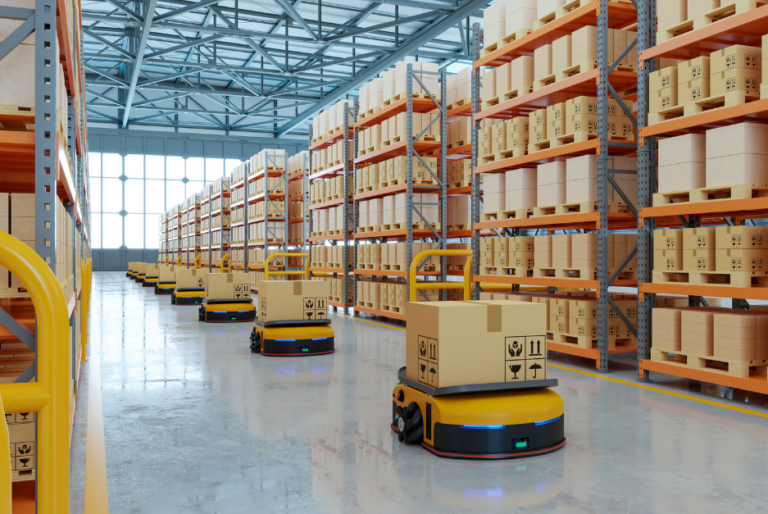How intelligent systems can optimize logistical security and efficiency

Published by Strategy and Consulting on 12 September 2023
Overseeing secure, efficient aviation, supply chain and logistics management is a demanding task. The complexity of day-to-day life often gets in the way of the seamless delivery of people and goods to destinations national and international. It’s somewhat miraculous when a flight arrives on time or that supermarket shelves remain stocked. There is so much behind-the-scenes involvement in what we as consumers often take for granted.
Much to the chagrin of those responsible for this invaluable work, the administration of these core services is only mounting in complexity.
The chaos of the everyday
Firstly, rapid technological change is creating new vectors for data collection and use, increasing the scale of supply chain and logistics management. Though many of these technologies provide greater diagnostic fidelity, such as integrated internet-of-things (IoT) sensors, trackers and metadata providing real time insight into delivery risks, there remains simply too much information for humans alone to ingest. In the digital age, we can no longer rely on the cumulative strength of human brainpower to navigate supply chain risk. Technologies of automation, such as machine learning, propose to supplement the growing range of deficits in human cognitive capacities.

Moreover, as recent history has shown, there are more than just incidental threats to supply chain management. Cyber disruptions towards the transport, aviation and logistics sectors are increasing in frequency for both geopolitical and economic gain. Denying access to or encrypting critical operational technology in a sole airline traffic control operator, for example, can yield a disproportionate ripple effect to dependent sectors. These industries are deeply integrated with the broader economy; even the briefest of disruptions can incur acute externalities and cause significant harm. Protracted shortages of food, medicine and energy – the distribution of which being enabled by efficient logistics and supply chain management – can and has harmed individuals and communities. One need not look further than the JBS and Colonial Pipeline ransomware incidents to understand the precarity with which modern supply chains operate. Similarly, automated solutions can provide wide-reaching cyber incident detection and prevention mechanisms and, when combined with logistics and supply chain management tools, can forecast second- and third-order effects at scale.
These two factors are interrelated. No single person, organization or country is exclusively responsible for seamless and secure supply chain management, nor can they achieve such through the exhaustion of sheer human faculties alone.

The growing vectors for data collection across supply chains simultaneously builds out a broader cyber threat surface that must be secured atop of being monitored and optimized for operational efficiency.
This compounding complexity can reduce human bandwidth and expose the economy to greater and new types of shocks; not what we need in already trying economic circumstances.
Deus ex machina?
The appropriate deployment of technologies of automation, however, can fill and complement these cognitive gaps by parsing the deluge of the disparate data points involved in supply chain management that remain mostly inaccessible to pure human interpretation. By so doing, these tools can chisel data, supply chain and network activity into a meaningful narrative for human analysis. Technologies of automation, used correctly, can help everyone – warehouse operations, air control towers and logistics management centres – expedite their core business functions. It can also assist cyber security operations centres, security analysts and intelligence analysts in prioritising cyber security threats across the expansive modern threat surface of aviation, supply chain and logistics management.

Foremost in this process – and central to applications such as machine learning – is sound data governance: knowing what data is being consumed, how it is being processed and what for, and where it is being stored all contribute to an effective, hygienic, and secure environment for managing supply chain risk.
Not implementing adequate data governance practices, however, can serve to undermine the efficiencies otherwise gained by automation. This requires sound human judgment backed by broad business buy-in to invest in hygienic data governance as a precondition for the effective use of technologies of automation.
Horses for courses running in the same race
When implemented properly, the symbiosis of human-machine intelligence generation can serve dividends in the predictability of supply chain disruptions and inform effective preparatory activities. These practices can inform a more resilient security posture that, complemented by appropriately forward-looking cyber intelligence, can respond effectively to the evolving cyber threat environment. What remains important is that automated technologies are not a catchall, and only supplement human shortfalls where demonstrably appropriate. And, crucially, without a human-engineered effort to secure robust data foundations or appropriate configurations for automation capabilities, we cannot expect them to advance greater supply chain management. Indeed, we can most likely expect them to work against such an enterprise. Garbage in, garbage out so the adage goes.
Truly intelligent systems afford humans and technology responsibilities commensurate with the task at hand. The prospective benefits to supply chain efficiency and security can be realized at scale if new technical capabilities are administered appropriately. Where humans are incapable, technology should provide supplement. But unless rooted in firm data foundations and continually validated by human assessment, technology can hinder more than it can help.
Author: Jack Goldsmith – Strategy and Consulting






